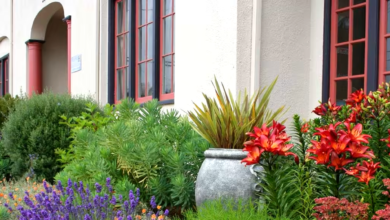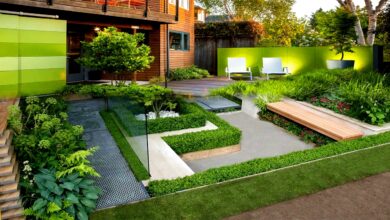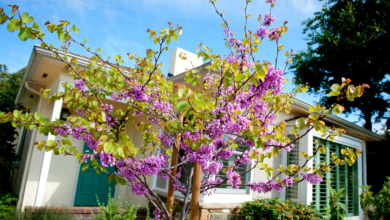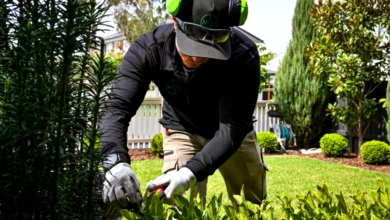DIY Vertical Gardens: The Space-Saving Trend Taking Over Urban Homes
This comprehensive guide will walk you through the benefits, design ideas, materials, and step-by-step instructions to build your stunning DIY vertical garden.

In today’s fast-paced urban lifestyle, finding space for a traditional garden can be a challenge. However, the rising trend of DIY vertical gardens is revolutionizing how city dwellers incorporate greenery into their homes. These innovative gardening solutions maximize limited space, improve air quality, and add aesthetic appeal to any living area.
Whether you’re a seasoned gardener or a beginner, creating a DIY vertical garden is an accessible and rewarding project. This comprehensive guide will walk you through the benefits, design ideas, materials, and step-by-step instructions to build your own stunning vertical garden.
Why Choose DIY Vertical Gardens?
1. Space-Saving Solution for Urban Living
One of the biggest advantages of a DIY vertical garden is its ability to thrive in small spaces. Unlike traditional gardens that require large plots of land, vertical gardens grow upwards, making them perfect for balconies, patios, and even indoor walls.
2. Improved Air Quality and Mental Well-being
Plants naturally filter toxins from the air, and a vertical garden enhances this benefit by increasing the number of plants in a compact area. Studies also show that greenery reduces stress and boosts mood, making vertical gardens a wellness-enhancing home feature.
3. Enhanced Aesthetic Appeal
A well-designed DIY vertical garden can transform dull walls into vibrant, living art pieces. From lush foliage to colorful blooms, vertical gardens add texture and life to any space.
4. Sustainable and Eco-Friendly
Growing your own herbs, vegetables, or flowers reduces reliance on store-bought produce, lowering your carbon footprint. Additionally, vertical gardens can improve insulation, keeping homes cooler in summer and warmer in winter.
Types of DIY Vertical Gardens
1. Pallet Vertical Gardens
Wooden pallets are a popular choice for DIY vertical gardens due to their affordability and versatility. Simply secure a pallet to a wall, add landscape fabric, fill with soil, and plant your favorite greens.
Best Plants for Pallet Gardens:
- Herbs (basil, thyme, mint)
- Succulents
- Small flowers (petunias, pansies)
2. Hanging Pocket Gardens
Fabric pocket planters are an excellent option for those who prefer a lightweight and flexible system. These can be hung on fences, railings, or walls, making them ideal for renters.
Best Plants for Pocket Gardens:
- Strawberries
- Ferns
- Leafy greens (lettuce, spinach)
3. PVC Pipe Vertical Gardens
Repurposed PVC pipes can be cut and mounted vertically to create a unique planting system. This method is great for growing herbs and small vegetables while conserving water efficiently.
Best Plants for PVC Gardens:
- Cherry tomatoes
- Peppers
- Green onions
4. Living Walls with Modular Planters
For a more polished look, modular planter systems allow you to create a living wall with interchangeable panels. These systems often include built-in irrigation, making maintenance easier.
Best Plants for Living Walls:
- Ivy
- Spider plants
- Begonias
Materials Needed for a DIY Vertical Garden
Before starting your project, gather the following supplies:
- Structure: Pallets, PVC pipes, hanging pockets, or trellises
- Growing Medium: Potting soil, coco coir, or hydroponic substrate
- Plants: Choose based on light and space requirements
- Irrigation System: Drip irrigation or self-watering containers (optional but helpful)
- Tools: Drill, screws, staple gun, scissors, and gardening gloves
Step-by-Step Guide to Building a DIY Vertical Garden
Step 1: Choose the Right Location
- Sunlight: Most plants need 4-6 hours of sunlight daily. South-facing walls are ideal.
- Accessibility: Ensure the garden is easy to water and maintain.
- Wall Strength: Confirm that the structure can support the weight of soil and plants.
Step 2: Select Your Vertical Garden Design
Pick a design that suits your space and skill level. Beginners may start with pocket planters, while advanced DIYers can experiment with hydroponic systems.
Step 3: Prepare the Structure
- For Pallets: Sand rough edges, line with landscape fabric, and fill with soil.
- For PVC Pipes: Drill holes for plants, secure vertically, and connect a water reservoir.
- For Pocket Planters: Hang securely and fill each pocket with soil.
Step 4: Plant Your Greenery
- Start with small seedlings or cuttings.
- Space plants appropriately to avoid overcrowding.
- Water thoroughly after planting.
Step 5: Install an Irrigation System (Optional)
- Drip Systems: Efficient for large vertical gardens.
- Self-Watering Containers: Ideal for low-maintenance setups.
- Manual Watering: Use a watering can with a long spout for hard-to-reach plants.
Step 6: Maintain Your Vertical Garden
- Watering: Check soil moisture regularly—vertical gardens dry out faster.
- Pruning: Trim overgrown plants to encourage healthy growth.
- Fertilizing: Use organic fertilizers every few weeks.
Best Plants for DIY Vertical Gardens
1. Herbs
- Basil, parsley, and cilantro thrive in vertical setups.
2. Leafy Greens
- Lettuce, kale, and spinach grow well in stacked planters.
3. Succulents & Air Plants
- Low-maintenance and drought-resistant.
4. Flowering Plants
- Petunias, begonias, and nasturtiums add vibrant colors.
Common Challenges & Solutions
1. Overwatering or Underwatering
- Use well-draining soil and check moisture levels frequently.
2. Poor Plant Growth
- Ensure adequate sunlight and nutrients.
3. Structural Stability
- Reinforce heavy planters with sturdy mounts.
Final Thoughts: Embrace the DIY Vertical Garden Trend
DIY vertical gardens are more than just a trend—they’re a sustainable, space-saving solution for urban gardening. Whether you want fresh herbs, beautiful flowers, or a lush green wall, building a vertical garden is a fulfilling project that enhances your living space.
Start small, experiment with different designs, and watch your DIY vertical garden flourish. With creativity and minimal effort, you can bring nature into even the tiniest urban home.










